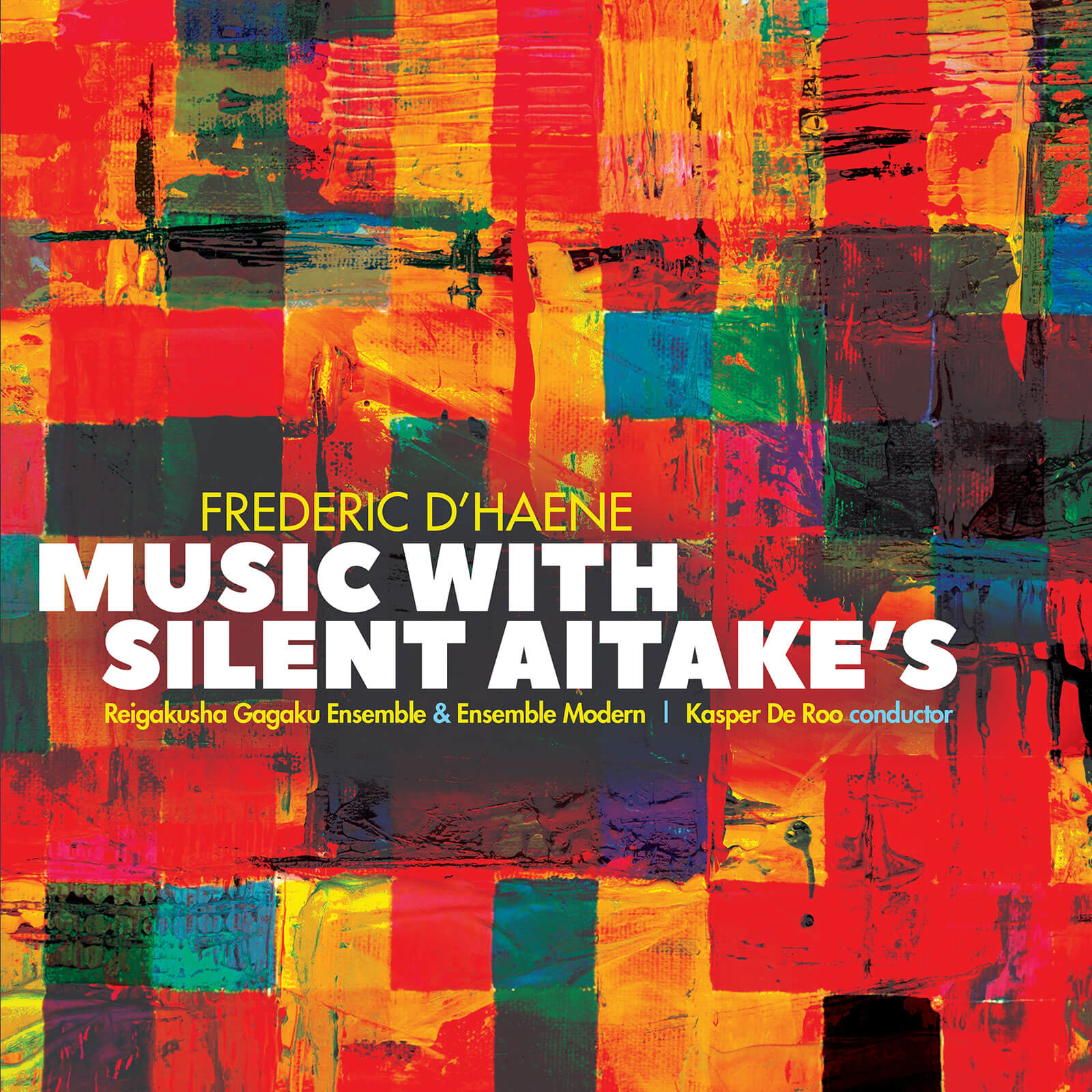
Share Album:
Music With Silent Aitake’s
Frederic D’Haene composer
Reigakusha Gagaku Ensemble
Ensemble Modern
Kasper De Roo conductor
Composer Frederic D’Haene creates a remarkable musical world in MUSIC WITH SILENT AITAKE’S. When he was 25 years old, D’Haene began his life-long fascination with gagaku music, or traditional Japanese court music, that has informed his compositional style throughout his career. This study of a musical style different from that of his own culture resulted in what the composer calls “paradoxophony” or “paradoxical coexistence.”
Exploring deeper territory than standard cultural crossover music might, MUSIC WITH SILENT AITAKE’S offers a splendid introduction to this distinctive style. On the one hand, he combines the sound of a Western instrumental ensemble with that of a traditional Japanese gagaku orchestra. On the other, he has invented musical material and designed a pitch structure starting from the points of tangency between the two worlds. D’Haene also composes with drones, contributing to the overall coherent impression of these compositions.
The music on the album is performed by the internationally esteemed Reigakusha Ensemble and by Ensemble Modern, one of the premier new music ensembles in the world. The orchestras are conducted by Kasper De Roo, an internationally renowned interpreter of 20th and 21st-century music.
MUSIC WITH SILENT AITAKE’S clearly exemplifies paradoxophony, in that the listener tends to forget that there were two separate musical worlds at the beginning of the composition. The western ensemble and the gagaku not only coexist, but they enhance one another, opening new sonic and expressive possibilities and guiding the audience into an exciting new musical universe.
Listen
Stream/Buy
Choose your platform
"D'Haene finds just the right points of confluence between Western and Eastern notions of consonance and dissonance, and tension and resolution."
Track Listing & Credits
| # | Title | Composer | Performer | |
|---|---|---|---|---|
| 01 | Music with Silent Aitake's: Pt. 1, Netori 1 | Frederic D’Haene | Reigakusha Gagaku Ensemble; Ensemble Modern; Kasper De Roo, conductor | 3:28 |
| 02 | Music with Silent Aitake's: Pt. 2, Gagaku 1 - Haya Yo Byoushi | Frederic D’Haene | Reigakusha Gagaku Ensemble; Ensemble Modern; Kasper De Roo, conductor | 15:50 |
| 03 | Music with Silent Aitake's: Pt. 3, Netori 2 | Frederic D’Haene | Reigakusha Gagaku Ensemble; Ensemble Modern; Kasper De Roo, conductor | 3:29 |
| 04 | Music with Silent Aitake's: Pt. 4, Gagaku 2 - Haya Roku Byoushi | Frederic D’Haene | Reigakusha Gagaku Ensemble; Ensemble Modern; Kasper De Roo, conductor | 15:29 |
| 05 | Music with Silent Aitake's: Pt. 5, Netori 3 | Frederic D’Haene | Reigakusha Gagaku Ensemble; Ensemble Modern; Kasper De Roo, conductor | 3:51 |
Recorded January 22, 2015 in Frankfurt LAB at the Frankfurter Positionen in Frankfurt Germany
Recording Session Producer Hessischer Rundfunk
Recording Session Engineer Udo Wüstendörfer
MUSIC WITH SILENT AITAKE’S, dedicated to Junko and Seikichi Takahashi, was originally commissioned by the HERMESensemble and received funding from The Flemish Ministry of Culture, the HERMES ensemble, Koen Kessels, the Spes Foundation, and Ensemble Modern for the writing of the individual parts.
Executive Producer Bob Lord
Executive A&R Sam Renshaw
A&R Brandon MacNeil
Vice President, Audio Production Jeff LeRoy
Mastering Shaun Michaud, Lucas Paquette
Art Director Brett Picknell
Design Ryan Harrison, Edward A. Fleming
Publicity Patrick Niland
Artist Information
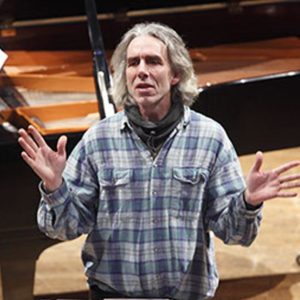
Frederic D’Haene
Frederic D’Haene is a Belgian avant-garde composer and creator of his own composition technique called ‘paradoxophony’ or ‘paradoxical coexistence.’
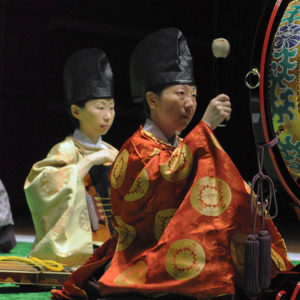
Reigakusha Ensemble
Reigakusha was established in 1985 as an ensemble of professional gagaku instrumentalists dedicated to the study and performance of the classical gagaku repertoire and the creation of new music for ancient instruments. Led by the distinguished musician and composer Sukeyasu Shiba–a specialist in music for the ryuteki flute and biwa, and a former member of the Music Department of the Imperial Household Agency–Reigakusha has around thirty members.
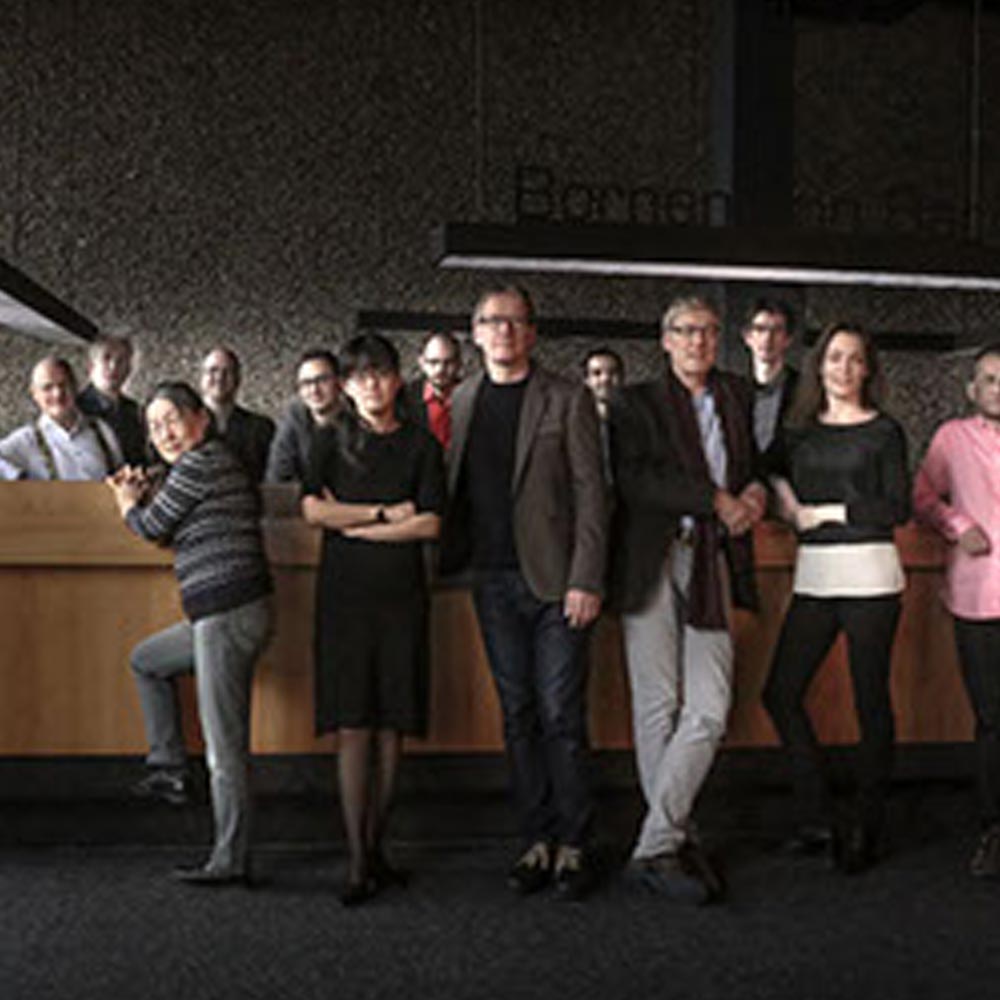
Ensemble Modern
Dietmar Wiesner flute Christiane Albert flute Nina Janßen-Deinzer clarinet, soprano saxophone Ib Hausmann bass clarinet Udo Grimm tenor saxophone Uwe Dierksen trombone Jeroen Mentens trombone Hermann Kretzschmar piano Rumi Ogawa percussion David Haller percussion Daniel Raabe cello Michael M. Kasper cello Paul Cannon double bass Norbert Ommer sound direction.
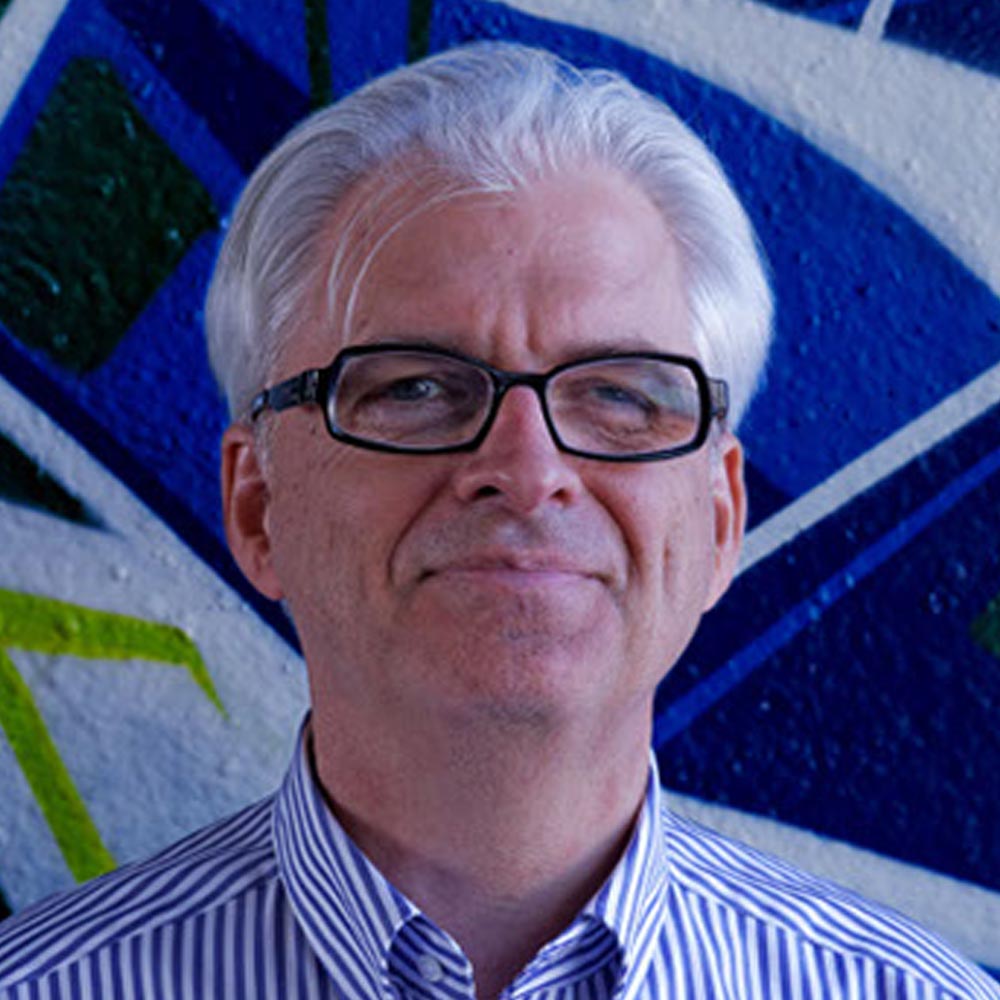
Kasper de Roo
Kasper de Roo is an internationally renowned interpreter of 20th and 21st-century music. After studying the bassoon and conducting at the Royal Conservatory in his home city of The Hague and at the Sweelinck Conservatory in Amsterdam, he initially worked as a bassoonist with the Rotterdam Philharmonic Orchestra, before making his debut as a conductor at the 1979 Cabrillo Music Festival at the invitation of Dennis Russell Davies. The following year, he was a prizewinner at the International Competition for Conductors in Besançon.
Notes
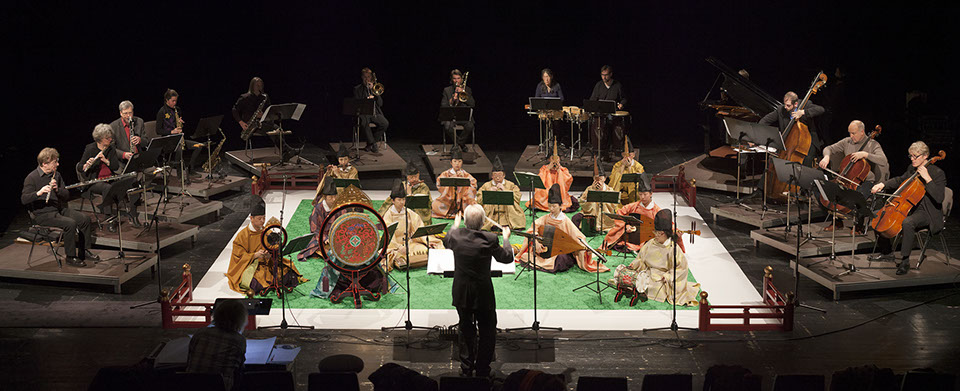
“Music with Silent Aitake’s,” Frankfurt January 2015. Photo: Walter Vorjohann
In the 21st Century, numerous composers have challenged the strict delineations of musical genres and aesthetics. Aesthetic approaches depending on ‘crossover’ and ‘multiculturality’ have pervaded countless musical genres, with varying degrees of success. For Frederic D’Haene, the coexistence of different musical systems (both in technical and cultural terms) is a positive response to the dissolution of a common ground (such as tonal syntax) since the end of the 19th Century. Rather than building a new musical language from scratch, he searches for elements from all kinds of backgrounds that can work together in a mutually reinforcing way. The essence of his composition technique, which he himself calls “paradoxophony,” is the combination of two or more musical worlds in which none takes control over the other.
MUSIC WITH SILENT AITAKE’S is a splendid example of this paradoxophony. On the one hand, D’Haene combines the sound of an ensemble of western instruments with that of a traditional Japanese gagaku orchestra; on the other, he has invented musical material and designed a pitch structure starting from the points of tangency between the two worlds. In his approach to the composition, D’Haene has ensured some points of reconciliation, but both groups remain faithful to their identity and tradition. He deliberately avoids Eurocentricity or exoticism.
A first challenge D’Haene had to face in this composition was the tuning of the instruments, since gagaku is tuned considerably lower than western standard tuning. He solved this issue by relying on the essence of any kind of music: sound. Each sound consists of a fundamental tone, enriched with many sympathetic frequencies called overtones. Some of these frequencies are ‘out of tune’ if approached from the Western point of view, but therefore could be matched with the pitches of the gagaku ensemble. Due to this painstaking effort of meticulously researching points of convergence between the two ensembles, the sonic result is surprisingly harmonious. In some instruments, D’haene asks for a different (microtonal) tuning of the strings, in order to enhance the resonance between East and West. The two upper strings of the double bass, for instance, are tuned three quarter tones higher than normal to match the pitches of the Sho (a Japanese mouth organ).
The fact that D’Haene often composes with drones (long-held tones or chords that are a basis for harmonic movement) contributes to the overall coherent impression of this composition. MUSIC WITH SILENT AITAKE’S is built on the alternation of a drone on E and one on B. A single drone can act as the basis for several harmonic spectra, which are paradoxophonically combined.
A second challenge in composing and performing this piece is related to differences in performance practice. Western and Eastern music practices have an entirely different understanding of time. Whereas Western music takes control of time by imposing regular and symmetric pulses and beats, Eastern music follows time in a much more natural way. In gagaku, there is no conductor to mark the beat, but all the players try to acquire the same sense of time by listening to each other. Recurring rhythmical patterns (such as ‘katari’ and ‘mororai’) and accelerating figures lead them from one musical section to the next. In MUSIC WITH SILENT AITAKE’S, the form and direction of the music is very much oriented towards the gagaku practice, but the conductor plays an essential part in keeping both worlds together. In line with traditional performance practice, D’Haene provides clear reference points in the score which act as auditory clues for the gagaku players as well, but there are also moments where they abandon their usual repertoire of rhythms and melodies and approach their instruments in a non-traditional way.
Lasting over 40 minutes, MUSIC WITH SILENT AITAKE’S is quite demanding both for the players and the audience, but its compelling form guides the listener from beginning to end through an exciting new musical universe. The composition begins with the first of three netori, the gagaku equivalent of a classical prelude. In traditional gagaku, netori is the presentation and exploration of a chosen scale, introduced by all the instruments in a fixed order. In MUSIC WITH SILENT AITAKE’S, however, each netori focuses on a different group of instruments and prefigures elements of the section to follow. Also in line with the gagaku tradition are the gradual build-ups of tension and dynamics, leading to climaxes (kuwaheru) and important moments of silence.
Perhaps the paradox of the concept of paradoxophony is that one tends to forget that there were two different worlds at the origin of the composition. The Western ensemble and the gagaku not only co-exist, but they enhance one other, opening up new sonoric and expressive possibilities.
— Klaas Coulembier
